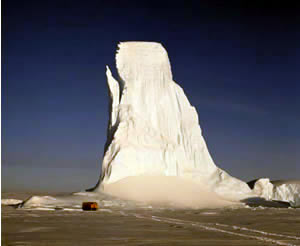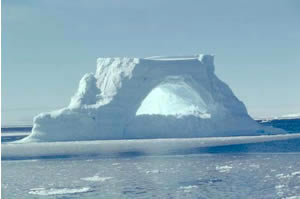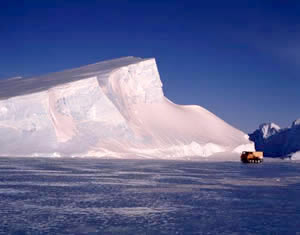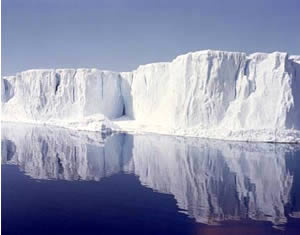| A piece of an ice shelf or a glacier
tongue fallen into the ocean is called an iceberg when it is taller
than 5m above the sea level. In general an ice shelf becomes a tabular
berg and a glacier tongue forms irregular shapes. The tabular bergs are common in Antarctica. In the South Ocean there are more than 200,000 icebergs and their longevity is said to be 12 years. In 1963 an iceberg of 175km by 75km was found offshore of Syowa Station. |
|
| Ice Shelf | |
| A part of an ice sheet pushed down into the ocean. It usually extends along the coastline and the tip reaches 2-50m or more above the sea level. The surface is flat or has mild hills. Some ice shelves could reach the seabed. When the tip breaks and falls into the ocean, the phenomenon is called iceberg separation. | |
| Glacier Tongue | |
| A glacier end overhanging the ocean or the base of a mountain. When the flow speed is extremely slow, force from various directions molds a glacier tongue into a complex shape. | |



